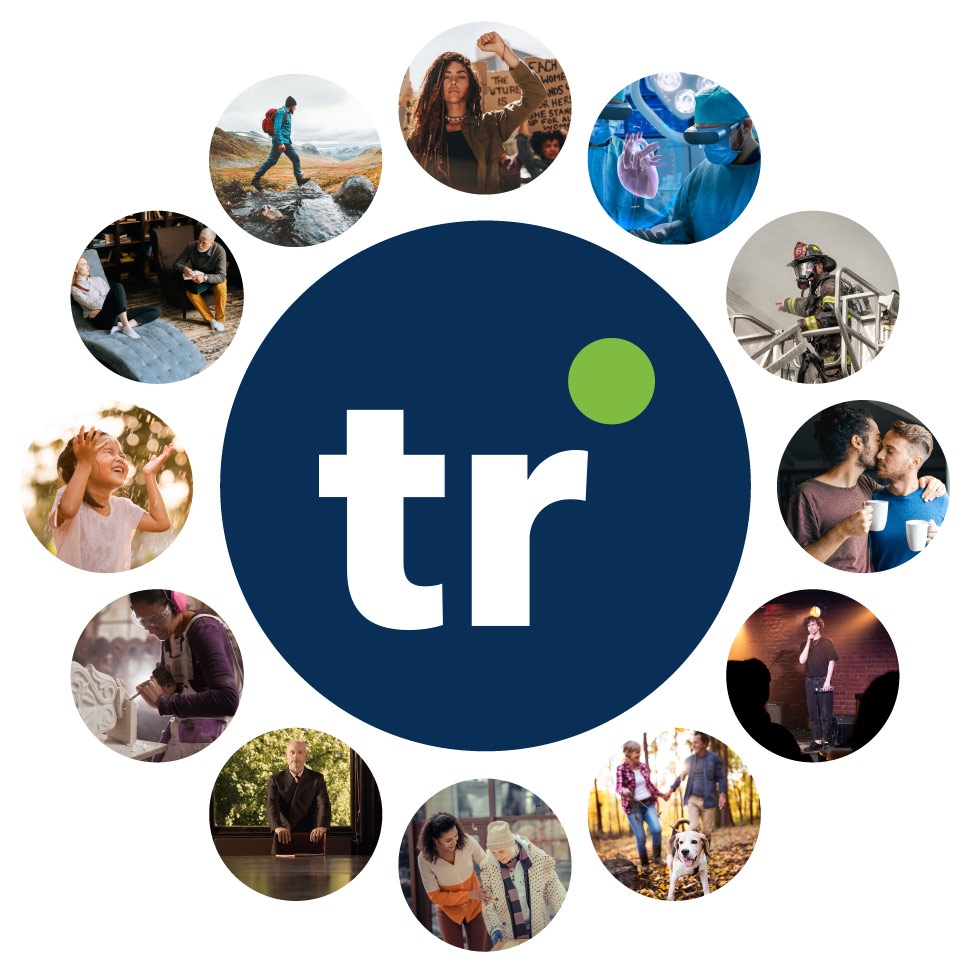
Creating a Powerful Brand Experience Founded on Truth and Science – Rather Than Trends.

Creating a Powerful Brand Experience Founded on Truth and Science – Rather Than Trends.

Creating a Powerful Brand Experience Founded on Truth and Science – Rather Than Trends.

Learn how this proven approach can inspire a more authentic, engaging and science-based brand experience.



Imagine you’re at the grocery store, rushing to buy everything you need for tomorrow’s dinner. Navigating the aisles, you instinctively reach for many of the products without much thought or deliberation.

While price is certainly a factor in some instances, it’s proven that consumers rely on their emotions much more than practical information. Today’s marketplace is filled with endless product and service options — and branding is more important than ever. We (irrationally) spend more for branded products versus much less expensive generic options, even during economically challenging times. And it’s not by happenstance. For decades, behavioral science has revolutionized brand and consumer marketing.

At the heart of our brand reasoning are two traits that are inherent in all of us—humans love stories and are emotionally drawn to characters (people). Research tells us that consumers perceive the same type of personality characteristics in brands as they do in other people. We humanize products. This emotional and often irrational behavior trait leads people to be more attracted to some personality types than others. It’s the reason why you reach for Campbell’s, Amy’s Kitchen or Progresso soup versus any of the other readily available generic alternatives. Product branding comes in the form of a logo, image and color palette with each supporting a narrative that connects more with our hearts rather than our minds. Whether on a large billboard or a soup label, it’s important that your brand experience conveys your story and emotionally connects with your target consumer.

When it comes to branding and evoking emotion, dense copy is your enemy. Less work for your audience means greater engagement. Visuals can stimulate positive emotions and allow for more immediate processing. This means craftily controlling color and incorporating icons to support your messaging more efficiently. By making the messaging and design as simple as possible, you empower the consumer to establish an immediate emotional connection and focus on what’s most important. In short, simplifying your brand identity will simplify the customer experience—and consumers like simplicity.

Have you ever noticed the impact of shape and color? Brain research shows that a brand’s use of shapes can subconsciously affect how it is perceived. Curves are typically seen as more inviting, while sharp edges and angles symbolize power (and potentially create aversion). Meanwhile, the power of color can’t be understated. A research study from Xerox and Loyola College found that seeing a logo in color made it 39% more memorable than viewing the same logo in black and white. We also know that adding color to your blog posts, product guides, print collateral and other brand materials can increase brand recognition by 80% (Reboot, 2018).

As humans, we like to be challenged. Research on problem solving tells us that we get emotional rewards in the form of dopamine boosts when we solve problems. This can best be seen in logo design incorporating negative space and layered symbolism. The world’s most renowned logos contain much more than initially meets the eye. They tell a story on their own and challenge the consumer to mentally fill in a few simple gaps. Most importantly, they capture the imagination and become forever entrenched in the mind of your audience. In FedEx’s logo, the negative space between the “E” and “X” form an arrow. Amazon’s smiling arrow subtly notes the company has it all by connecting “a” to “z.” Last but not least, our Truelio logo contains a smile in the negative space between the “i” and the dot above. The “i” is designed to appear as a person, representing our people-first partnership approach. Click here to learn more about our brand story.
No matter your brand vision, we understand that telling your story and capturing the hearts and minds of customers and prospects can be a daunting challenge. We’re here to help and would love to learn how we can inspire a brand experience that’s memorable, dynamic and authentically represents your culture and people.

How things have changed over the past decade. Remember those simpler times when there were only a handful of smartphones to choose from and social media was more about connecting better with friends and family. As technology continues to redefine people’s behaviors, the information pool grows deeper by the day making it more difficult than ever to keep your interactive marketing in step with the consumer experience. The days of siloed SEO, paid media, email marketing and social media marketing campaigns being haphazardly deployed just don’t cut it any longer. All digital channels have now combined into one integrated ecosystem — and it’s critical this ecosystem is founded on a cohesive and responsive strategy.
The goal of any interactive marketing strategy should be to integrate interactive storytelling through layered targeting with a customized creative design that’s based on end-user behavior. Sound complicated? Well, it doesn’t have to be. More simply stated, layered targeting is the application of incremental “filters” to drill down to smaller audiences with very specific attributes. Below are a few of the more common layered targeting filters.
Interactive marketing is a marketing strategy that focuses on one-to-one interaction and customer communication. It involves marketing efforts based on consumer behavior, which distinguishes it from traditional forms of marketing.
Google’s pre-defined list of 508 verticals in which users have shown some intent to purchase or convert.
Groups of customers who are likely to have a strong interest in your products and services. They can include a wide range of lists from “sports fans” to “luxury travelers.”
A digital advertising targeting tactic that enables you to target URLs based on keywords that appear within website pages. The key with this type of targeting is to increase the likelihood that your digital ad will appear to those users who are most apt to purchase your product or service.

Analytics is one, if not the most important component of your interactive marketing strategy. Long gone are the Mad Men days of the 1960s when decisions were largely based on a combination of creativity and guesswork. Today’s sophisticated reporting tools provide the ability to better understand audience behavior, improve strategies and overall delivery insights that lead to improved decision-making.
Our team assists CMOs and digital marketing coordinators, as well as business owners, by helping them determine the correct strategic partners, channels, tools and strategies for success. We know analytics, we know web-based analytics software, and we benchmark everything. We work with our partners to determine where the pearls of actionable data reside in their analytics and reporting. We then use this data to construct campaigns based on what the end user intelligence tells us works and doesn’t work. Testing is the secret sauce when it comes to analytics.
We actually love to do research and the opportunity to closely study your customer, competition, web presence, past SEO and paid efforts and goals for the future. We also help you determine offers or value propositions that attract, persuade and convert new business.

How important is SEO? About 93% of online experiences start with a search engine. While you may have some understanding of how SEO works, even some of the savviest marketers don’t have a firm understanding of its many complexities. Our analytics and SEO specialists will define a benchmark for how you perform across the search engine landscape. We then use this performance benchmark to establish an SEO strategy that includes content initiatives, SEO element creation and installation, structured data markups and proper site architecture for optimum crawl-ability. Once defined, we develop a plan for ongoing SEO maintenance to empower your quest for web domination. It’s important to keep in mind that there’s a big World Wide Web out there. That’s why we work to build local citations and ensure that your business information is streamlined in all available directories and aggregators.

There are endless opportunities to interject your message while your potential customer or client searches the Web. This can be accomplished at the keyword level or by contextual targeting. Is your customer in the market to buy a home, a car or a B2B enterprise software suite? We use interactive tools, Google Ads, Microsoft Ads, AdRoll, Facebook, Instagram, Twitter, LinkedIn and GroundTruth as part of our paid media strategy. We also utilize a suite of additional demand-side platforms, or DSPs, which provide advertisers the ability to control and maximize the impact of multiple ads with a single interface. In short, all of these great tools enable us to optimally position your message to answer user searches and increase your online traffic.
One of our specialties is geofencing ad campaigns. Need to market to a company or a list of prospective customers? We use technology that helps us market your message to the right person, at the right time, in the right location, on the right device with the right offer or solution. Did your customer or client click an ad or visit your website? Well good! Let’s just add them into a retargeting list and continue to speak to them online about the product or service they engaged with.

Any successful interactive marketing strategy begins with delivering highly relevant and timely messaging. Leveraging the best email automation tool for your needs can make or break your success. We use marketing automation and CRM software to help you drive more leads, convert leads to sales and prove ROI. We work with HubSpot, Emma, Cheetah, Mailchimp, Constant Contact, Klaviyo and other email and marketing automation software providers to drive revenue through intelligent campaigns. We can provide you with the CRM and marketing automation software that works best for your operating environment.

As a culture, we tend to share a lot about ourselves through social media channels like Facebook, Instagram, LinkedIn and Twitter. Have you ever wondered what they do with the data? While a hot political topic of conversation over the years, there is one important reality to understand. The collection of all this data provides advertising agencies and brands the ability to market based on audience segmentation, interest categories, affinity categories and geography, all combined with basic demographics. This helps marketers present their brand in front of potential customers or clients where they already spend a good deal of their time.

We understand that advertising on the internet can be overwhelming. Our team of digital experts has worked with Fortune 500 companies, as well as B2C, e-commerce and B2B companies in the small and midsize business market. We conceptualize amazing creative, drive technology to benchmark, and deliver campaigns that produce multiple customer touch points. Most importantly, our campaigns deliver powerful results. Contact us today to learn how we can help you develop and manage your interactive marketing strategy.

In part one of this location-based marketing series, we provided an overview of our partnership with GroundTruth and the advantages of using their technology to revamp marketing strategies. In this second installment of the series, we dive into some specific benefits that our location-based digital marketing solutions offer and explore a few business niches that have experienced those benefits.

One added benefit that has positively impacted the campaigns we run with GroundTruth is their inclement weather bid strategy. This can be an effective way for car wash locations, sporting events, outdoor music festivals or even parks to adjust or even pause campaigns that are affected by weather events.
For instance, a global golf club manufacturer turned to us for help with its location-based marketing. In developing these campaigns, we needed to geo-target private and public golf clubs in North America to show advertising related to a specific product category to a contextually relevant audience. We found that we could achieve our strategy with a stunning visual static display and video content.
But what happens when it rains or is too cold for play? We would automate our bid strategy to increase our acceptable CPM (cost per thousand impressions) to display on mobile devices at the company’s locations or retail locations that sell the golf brand’s product line. This could include stores like the PGA Tour Superstore. We would then pause our campaigns at golf clubs affected by the weather event.
Our team has also found great applications for GroundTruth location-based digital marketing within the veterinary care industry. We advertise online for a chain of veterinary clinics around the southeastern United States. The tools at play for these campaigns include Google Ads for direct response search campaigns, Google Display Network, the Meta Universe (including Facebook and Instagram advertising) and, of course, GroundTruth.
Using these tools, we show ads that communicate the value of the practice between the referenced platforms. We also track conversions using Google Tag Manager event tracking. Next, we push those conversion click activity events, such as click-to-call and click-to-navigate; then we reserve your spot in Google Analytics, which is the bible of our campaign reporting. GroundTruth can also report the store visit metrics because an impression on a mobile device resulted in the targeted customer visiting an actual veterinary clinic location. That’s super cool, right?

We use the same approach discussed above for the sale of building products. We provide website development, SEO, and paid media services for several large exterior cladding building product manufacturers.
While one might think that stone veneer or brick is not the sexiest product category in the world, we absolutely love it! Our team has worked to modernize the approach to paid media advertising for building product brands. In the process, we use the same combination of Google, Meta and GroundTruth. At the same time, we display stunning visuals and track in-store conversions in dealer and distributor locations across North America and Canada.

Location-based digital marketing is constantly evolving. The technologies that power this amazing tool for digital marketers are becoming more robust and effective. Our job as marketers is to use the tool as intended while finding new ways to leverage the technology for our clients.
We constantly dig deep into our creative capabilities to apply stunning aesthetics, competitive offers and strategic solutions to the problems experienced by our clients’ customers. We strive to attract, persuade and convert new business every day. GroundTruth is a big part of this mission. We are thankful for the partnership we share with them as they help us get real results for our clients. Truelio, together with GroundTruth, can develop a customized location-based digital marketing solution that’s right for you.

Location-based marketing is a significant part of any digital marketing strategy today. It works incredibly well for retail campaigns and drives in-store visits in restaurants, car dealerships and consumer brand locations across the globe. We have also established additional ways this technology and tactic can work beyond merely driving traffic into storefronts.
There are some questions worth focusing on with this technology, such as “How?” and “Why?”
The creative or offer in the marketing message must be stunning to break through the digital noise on all the devices that keep consumers connected. But what about the data? Are there privacy concerns? These and other questions make it important to understand what location-based marketing is all about today and how you can make the most of this strategy.
Most agencies like to hide the tools of their trade behind a white-label wall. At Truelio, we like to explain to our clients how the proverbial sausage is made. Transparency is a creed that we live by.
Regarding location-based marketing, we have a strategic partnership with a company called GroundTruth. GroundTruth uses a combination of first-party data and mobile device location to target prospective audiences based on where they go in the physical world; it also considers the specific market segments to which those audiences belong. This enables businesses to hyper-target their audiences using consistently accurate and relevant information.

Let’s say that I am a male in his early 40s who works in the marketing and advertising industry. I like craft beer, the outdoors, great food and Americana music. Also, I geek out on cooking videos on YouTube, Instagram and TikTok. So, if there is an opportunity for a craft beer brand to market to me with the IPA du-jour, they have found their match.
But how exactly do they identify me by location? If my device has been near a microbrewery, pub, or package shop, and I fit the targeting criteria, BOOM! The brand, in this case, can advertise to me. If I enter the location that sells their version of the craft beer du-jour, then a store visit occurs within the conversion zone set up within the campaign.
That’s right—analytics shows a probable conversion at the point of sale when there is no connection between campaign attribution and the point-of-sale system within the retail location.
The partnership between Truelio and GroundTruth aims to supercharge businesses’ location-based marketing efforts. With the ever-changing marketing landscape, including the disappearance of third-party cookies, brands must be able to adapt accordingly. With the help of solutions from Truelio and GroundTruth, you’ll be able to get the best results from your marketing campaigns with the latest innovations.
Whether you’re a smaller business looking to dominate a specific service area or a larger company looking to branch out nationally or internationally, our location-based marketing tools give you what you need to flourish.
There are plenty of ways you can benefit from our solutions to improve your location-based marketing strategy. For example, you can use our inclement weather bid strategy to advertise weather-dependent businesses at the right time. A variety of industries also get the help they need to reach their audiences and drive traffic, including everything from veterinary care to construction.
Do you want to learn more about how our partnership with GroundTruth is revolutionizing location-based marketing for businesses of all kinds? If so, then tune into part two of this series to explore these tools in greater depth.

Since 2015, REI has remained closed on Black Friday as part of their Opt Outside movement. Initially developed as a stand against American consumerism of Black Friday, the messaging around #OptOutside was inclusive of everyone (customers and employees) who would benefit from not being able to shop at REI stores (and spending time outdoors instead). Last month, the specialty outdoor retailer announced the anti-Black Friday movement would be a permanent fixture confirming something quite remarkable: for this Black Friday and every Black Friday thereafter, REI will forgo sales at all locations and instead pay its more than 16,000 employees to enjoy time outside.

Eric Artz, the company’s President and CEO summarized their stance quite nicely stating, “Opt Outside has always been about prioritizing the experience of our employees — choosing the benefits of time outside over a day of consumption and sales. When we first introduced this movement, it was considered revolutionary for a retail brand, but we felt it was the right thing to do for our members and employees. Making Opt Outside an annual observance will serve as a yearly reminder of this commitment to doing the right thing for the co-op community.”
REI’s decision to permanently close its doors on Black Friday is a huge win for its employees and culture. While other retailers obsess over making more sales and devote less on culture, REI chose to invest in its very brand principals and use their Opt Outside movement as an opportunity to reinforce their corporate purpose. Since its inception, the company has been encouraging people to get outside and enjoy nature for years. So, what better way to do that than by closing their doors on the biggest shopping day of the year? By paying their employees to enjoy the outdoors rather than working the day following Thanksgiving, they simultaneously demonstrate employee-centricity while whole-heartedly embracing their ethos. REI also continues to invest in the infrastructure that makes outdoor life possible for both employees and customers – and the results have been extraordinary. Since the Opt-Outside policy was launched seven years ago, REI has grown to 16,000 employees and 21.5 million members. Most importantly, the movement continues to send a powerful message about the importance of culture and remaining attentive to how your corporate purpose intersects with your most important asset – your people.
The multi-million dollar question is what impact will REI’s decision to permanently close on Black Friday have on customer loyalty? Some predict it will only make the company more appealing to its customers, as the decision aligns perfectly with the growing distaste many consumers have for the day’s annual shopping craze – all the while passionately reinforcing its very purpose. REI hopes its stance will inspire customers and other companies to rethink Black Friday and perhaps embrace a strategy with a more seasonal spirit. Others are concerned that it will make REI seem a soft target since other retailers will remain open for business. That being said, the company’s website remains open for business. With Black Friday becoming increasingly an online shopping event, REI’s move to close its physical stores is more a stamp of approval of online retail than an indictment of the day itself. REI shoppers can continue placing online orders that will immediately process the following day and honor traditional Black Friday savings. In the end, what REI will potentially lose in the day’s sales will likely be exceeded in brand goodwill and gaining further brand loyalty among its greatest customers.
As a brand experience, digital marketing and technology agency, we keenly understand the importance of culture and the critical role it plays in gaining employee and customer loyalty. Great cultures attract great talent, which in turn inspire better creativity and incredible partner relationships. You may have noticed that we recently adopted “Where Passion Meets Purpose” as our brand mantra. Similar to REI’s Opt Outside, it’s a constant reminder of remaining true to our culture and our purpose. Too often, company’s lose sight of their values and mission. REI’s stance is a valuable reminder that great things happen when you remain authentic to who you are and what you stand for.
As with every Black Friday, Truelio’s offices will be closed so our colleagues can enjoy the time with their families – and to escape to the great outdoors.
#ThatsSoTruelio #OptOutside

Brian Fallers
Chief Brand Officer

Patrick Blanchard
VP, Interactive Marketing

Randy Dawson
Chief Marketing Officer